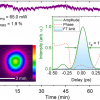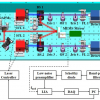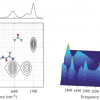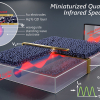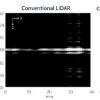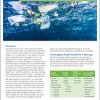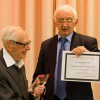
Researchers at the Indian Institute of Technology Bombay in India and the QIMR Berghofer Medical Research Institute in Australia have developed a rapid method for differentiating COVID-19-positive patients expected to show severe symptoms from those likely to experience only mild symptoms. The classification algorithm is based on infrared spectra of blood plasma.
Not all COVID-19 patients experience symptoms requiring intensive care. Early identification and prioritisation (triage) of patients based on severity can help free up resources and improve patient outcomes. This research has the potential to provide significant support to healthcare workers facing critical resource decisions.
In the study, the researchers collected infrared spectra of blood plasma from 160 COVID-positive patients from Mumbai (130 as a training set for model development and 30 as a blind test set for model validation). The spectra, collected on a Cary 630 FT-IR spectrometer equipped with a diamond-attenuated total reflectance (ATR) sampling module, revealed slight but observable differences between severe and non-severe COVID-19 patient samples.
Associate Professor Michelle Hill, head of QIMR Berghofer’s Precision and Systems Biomedicine Research Group, and one of the lead scientists of the study explained: “We found there were measurable differences in the infrared spectra in the patients who became severely unwell. In particular, there were differences in two infrared regions that correspond to sugar and phosphate chemical groups, as well as primary amines, which occur in specific types of proteins.”
Based on these differences, a multivariate statistical model was developed and tested.
Professor Sanjeeva Srivastava from the Indian Institute of Technology Bombay added: “We also found that having diabetes was a key predictor of becoming severely unwell in this group of patients, so we fed clinical parameters such as age, sex, diabetes mellitus and hypertension into the algorithm. We then tested the algorithm on blood samples from a separate group of 30 patients from Mumbai and found it was 69.2 % specific and 94.1 % sensitive in predicting which patients would become severely ill. However, it did result in more ‘false positives’ than predictions that were based solely on the clinical risk factors of age, sex, hypertension and diabetes. We hope that with more testing, we can reduce these false positives,” Professor Srivastava further explained.
Andrew Hind, Associate Vice President of Research & Development for the Molecular Spectroscopy Division at Agilent, stated: “We are very excited about this study, and happily supported the researchers in their fight against COVID-19 by placing the Cary 630 FT-IR spectrometer for this study. Their work highlights the potential of ATR-FT-IR spectroscopy for COVID-19 and infectious disease research, and we will continue to support research in this field.”









